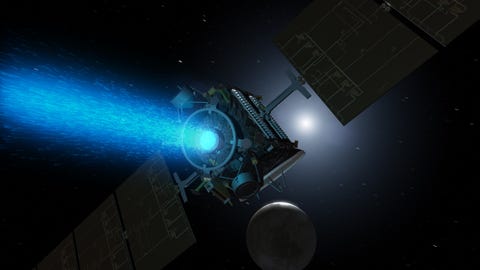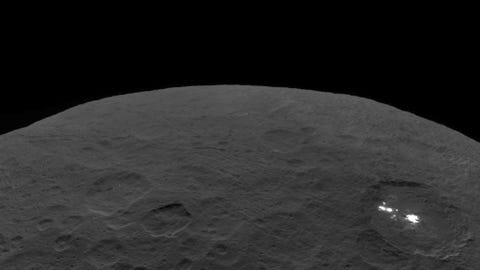NASA's Dawn Spacecraft Has Powered Down for Good
NASA's landmark mission to the asteroid belt has finally ended after years of breakthrough discoveries.
By Avery Thompson NASA/JPL-CALTECH
NASA/JPL-CALTECHThe Dawn spacecraft was never one of NASA’s most widely known missions, but it helped expand our understanding of the solar system. Dawn spent almost a decade studying a pair of asteroids in the asteroid belt between Mars and Jupiter, learning as much as it could about those strange worlds. Now, an announcement from NASA confirms what we’ve been expecting for a few months: Dawn has run out of fuel, and the mission is finally over.
Dawn was launched in 2007 and arrived at its first destination—the asteroid Vesta—in the summer of 2011. Along with giving us the best and closest look we’ve ever had at an asteroid in the asteroid belt, Dawn also mapped Vesta and discovered water on its surface.
Dawn left Vesta a year later, and in 2015 it entered the orbit of the dwarf planet Ceres, the largest object in the entire asteroid belt, where it spent the remainder of its time. Dawn produced a complete map of the surface of Ceres and discovered ice volcanoes. More important, Dawn found organic molecules—some of the crucial ingredients for life—suggesting that they are common throughout the solar system.

One of the last photos ever captured by Dawn, showing the Occator Crater and the landmark ice spots that had mystified scientists for more than a decade.
NASA/JPL-CALTECH/UCLA/MPS/DLR/IDA
Shortly before Dawn used the last of its fuel, it maneuvered into a high, stable orbit, where scientists are confident it will stay for the next 50 years. That way, in case NASA wants to send a follow-up mission, Dawn will not collide with Ceres before they do, keeping the planet free from human—and bacterial—contamination.
Even though Dawn is no longer collecting data, its death does not mark the end of its usefulness. “In many ways, Dawn’s legacy is just beginning,” said Dawn’s principal investigator Carol Raymond. “Dawn’s data sets will be deeply mined by scientists working on how planets grow and differentiate, and when and where life could have formed in our solar system.”
No comments:
Post a Comment